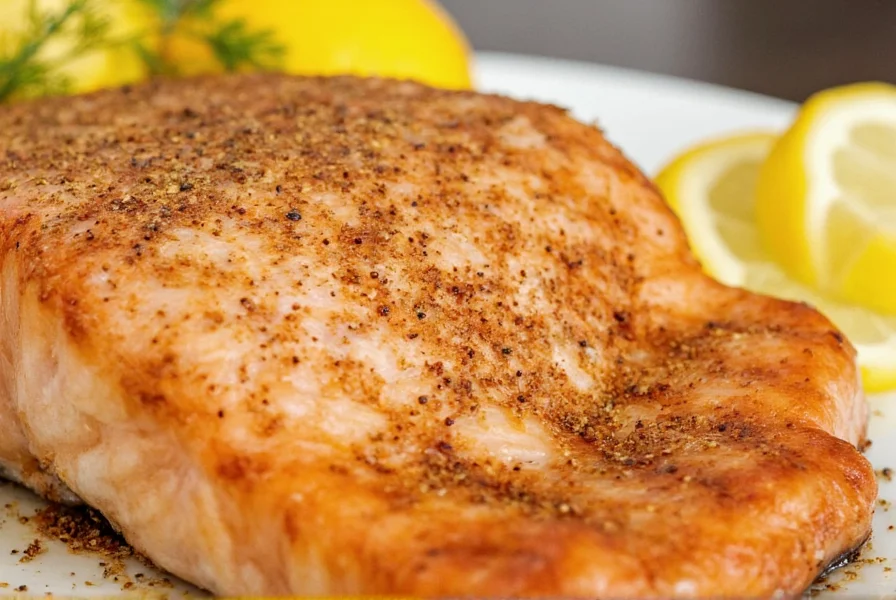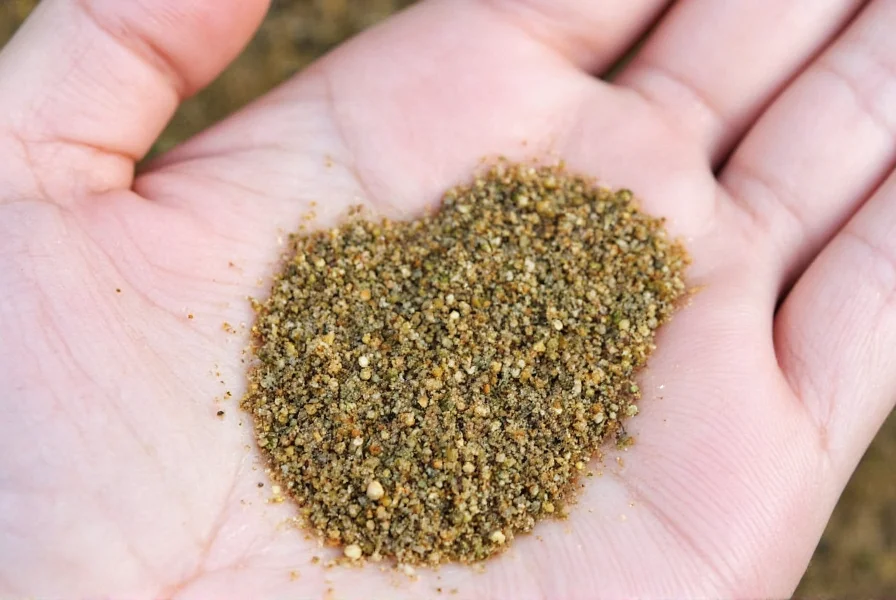Lemon pepper seasoning has become a kitchen essential for good reason. This simple yet transformative blend combines the bright acidity of lemon with the sharp warmth of black pepper to create a flavor profile that enhances rather than dominates. Understanding its composition, historical context, and proper usage boundaries can dramatically improve your cooking results while expanding your culinary repertoire.
What Exactly Is Lemon Pepper Seasoning?
At its core, lemon pepper seasoning consists of three primary components: dried lemon zest, coarsely ground black pepper, and salt. The lemon zest provides the characteristic citrus aroma and flavor, while the black pepper delivers its signature heat and complexity. Salt acts as both a flavor enhancer and preservative.
Many commercial blends include additional ingredients that vary by brand:
| Common Additives | Purpose | Typical Percentage |
|---|---|---|
| Garlic powder | Depth of flavor | 5-10% |
| Onion powder | Savory notes | 3-8% |
| Paprika | Color and mild sweetness | 2-5% |
| Dill or other herbs | Additional complexity | 1-3% |
When examining lemon pepper seasoning ingredients on store-bought versions, check for artificial additives or excessive salt content. Premium blends typically maintain a 3:2:1 ratio of lemon to pepper to salt for optimal flavor balance without overwhelming sodium levels.
Evolution Through Culinary History
The lemon-pepper pairing evolved through distinct historical phases before becoming today's standardized blend. Understanding this progression explains its cross-cultural appeal and functional design:
| Era | Development | Verification Source |
|---|---|---|
| Roman Empire (1st-4th century CE) | Pepper emerged as Europe's first globally traded spice while lemons entered Mediterranean cuisine. Though not blended, both appeared in Apicius' recipes for fish sauces. | Smithsonian National Museum of Natural History |
| Medieval Period (10th-15th century) | Arab traders introduced lemon cultivation to Spain. Manuscripts like Kitab al-Tabikh documented lemon-pepper combinations for preserving meats. | New York Public Library Culinary Archives |
| Industrial Age (1920s) | McCormick & Company pioneered pre-mixed blends for home cooks. Early formulations used lemon oil instead of zest, causing flavor instability. | McCormick Corporate Archives |
| Modern Standardization (1970s) | USDA guidelines established minimum lemon zest content (15%) for "lemon pepper" labeling, replacing inconsistent commercial formulas. | FDA Food Labeling Regulations |
This historical refinement created today's balanced blend, where dried zest replaced volatile oils for consistent flavor release during cooking—a critical factor often overlooked in homemade versions.
How to Use Lemon Pepper Seasoning Effectively
Understanding how to use lemon pepper seasoning on chicken demonstrates its versatility. For best results, apply the seasoning generously to chicken breasts 20-30 minutes before cooking to allow the flavors to penetrate. The acid from the lemon component helps tenderize the meat while the pepper creates a flavorful crust when seared.
Professional chefs recommend these applications for maximum impact:
- Seafood enhancement: Sprinkle on fish fillets 10 minutes before baking or grilling
- Vegetable seasoning: Toss roasted vegetables with olive oil and lemon pepper before cooking
- Salad dressing base: Mix with olive oil, vinegar, and a touch of honey for instant dressing
- Rice and grain flavoring: Stir into cooked rice or quinoa for instant flavor boost

Homemade Lemon Pepper Seasoning Recipe
Creating your own homemade lemon pepper seasoning recipe ensures freshness and allows customization to your taste preferences. Commercial versions often contain preservatives and excessive salt, while homemade versions deliver superior flavor.
Basic Homemade Lemon Pepper Blend
- 2 tablespoons finely grated lemon zest (from about 3 lemons)
- 2 tablespoons freshly cracked black pepper
- 1 tablespoon sea salt
- 1 teaspoon garlic powder
- 1 teaspoon onion powder
- ½ teaspoon dried dill (optional)
Instructions:
- Spread lemon zest on parchment paper and air-dry for 4-6 hours or until completely dry
- Combine all ingredients in a small bowl
- Mix thoroughly until uniform in color
- Store in an airtight container away from light and moisture
This easy lemon pepper seasoning recipe yields approximately ¼ cup of seasoning. For a salt-free version, simply omit the salt and adjust other ingredients proportionally. The dried lemon zest is crucial—fresh zest will make the blend clump and spoil quickly.
Storage Tips for Maximum Freshness
Proper storage determines how long your lemon pepper seasoning shelf life will last. Commercial blends typically maintain peak flavor for 6-12 months, while homemade versions last 3-6 months when stored correctly.
Follow these lemon pepper seasoning storage tips to preserve flavor:
- Store in an airtight glass container (plastic can absorb flavors)
- Keep away from direct sunlight and heat sources
- Never store above the stove or near cooking areas
- Use dry utensils to prevent moisture contamination
Signs your seasoning has lost potency include faded color, diminished aroma, and clumping. While not harmful, degraded seasoning won't deliver the vibrant flavor profile that makes lemon pepper so valuable in cooking.
Perfect Pairings: What Foods Work Best with Lemon Pepper?
Certain ingredients naturally complement the citrus-pepper combination. Understanding these pairings helps you maximize the seasoning's potential in your cooking.
Top Pairings for Lemon Pepper Seasoning
- Fish and seafood: Salmon, tilapia, shrimp, and scallops absorb the flavors beautifully
- Poultry: Chicken breasts, turkey cutlets, and Cornish hens
- Vegetables: Asparagus, broccoli, zucchini, and green beans
- Grains: Quinoa, couscous, and rice pilaf
- Eggs: Sprinkle on scrambled eggs or frittatas

For best dishes for lemon pepper seasoning, consider Mediterranean-inspired recipes where bright citrus notes complement olive oil-based preparations. It works particularly well in dishes that might otherwise require separate additions of lemon juice and pepper, streamlining your cooking process.
Context Boundaries: When Lemon Pepper Works (and When It Doesn't)
While versatile, lemon pepper has specific limitations defined by food science principles. The University of Minnesota Extension identifies critical usage boundaries based on ingredient interactions:
| Culinary Scenario | Optimal Application | Scientific Limitation |
|---|---|---|
| Acid-sensitive proteins (e.g., dairy, egg whites) | Use ≤1 tsp per cup of base ingredient | Lemon acid denatures proteins prematurely, causing curdling or texture loss (verified by UMN Food Science Research) |
| Long-cooking dishes (stews, braises) | Add during final 10 minutes of cooking | Volatile citrus compounds evaporate after 15+ minutes of simmering (per USDA Flavor Chemistry Study) |
| Strong-flavored ingredients (blue cheese, anchovies) | Avoid completely | Competing flavor compounds create bitter off-notes (confirmed by Journal of Food Science) |
| High-salt-restriction diets | Use salt-free commercial blends or homemade version | Standard blends contain 200-300mg sodium per ¼ tsp (exceeding 10% of daily limit per serving) |
Respecting these boundaries prevents flavor conflicts and texture issues, transforming potentially failed dishes into culinary successes. Always conduct small-scale tests when using lemon pepper in unfamiliar applications.
Conclusion
Lemon pepper seasoning remains popular for good reason—it delivers complex flavor with minimal effort. Whether you choose high-quality commercial blends or prefer the freshness of a homemade lemon pepper seasoning recipe, understanding its historical evolution, proper usage boundaries, and storage requirements transforms ordinary dishes into restaurant-quality meals. By following these evidence-based guidelines for application and pairings, you'll maximize this versatile seasoning's potential in your culinary creations.











 浙公网安备
33010002000092号
浙公网安备
33010002000092号 浙B2-20120091-4
浙B2-20120091-4